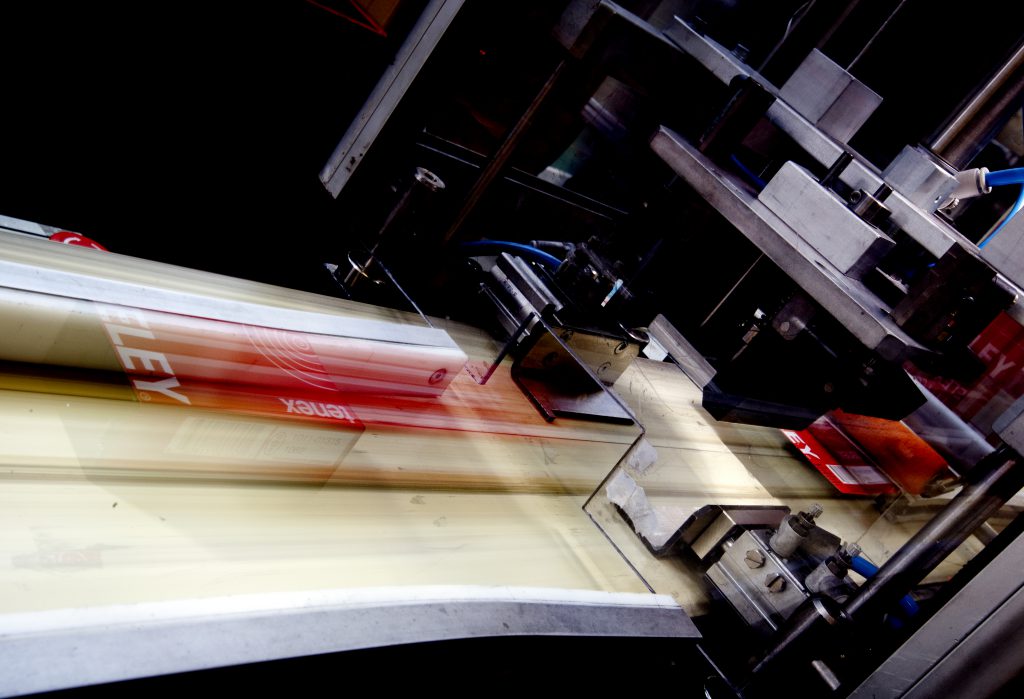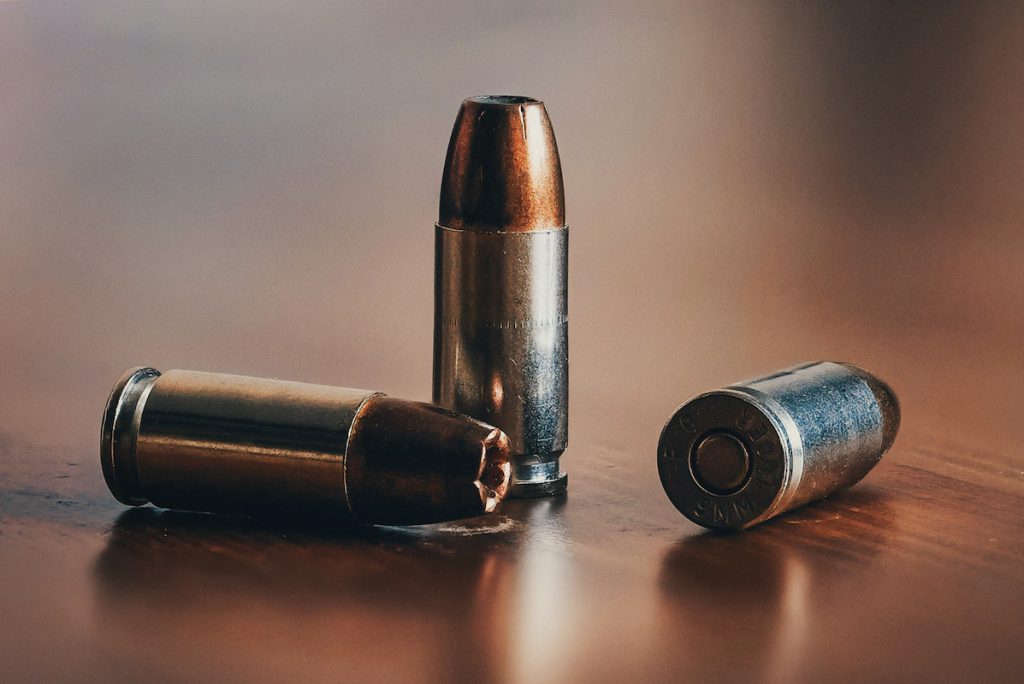When Will Guns Be Available Again
Cheers to the pandemic and its one-two punch on the economic system, I was furloughed from my day job — at a major health care provider in Michigan — in the centre of last summer. To pass the time, I took a seasonal gig behind the gun counter at a local outdoor sporting appurtenances shop. As the weeks ticked by, ammunition became increasingly deficient and the mood of our usually good-natured, loyal customers began to sour. Every day, sales associates were pelted by angry comments along the lines of, " What the fuck? You tin sell me a gun, but you tin can't sell me the armament that goes with it?" Or, "What good is a gun if I tin can't shoot information technology?!" There were accusations of employee hoarding, subconscious inventory, and even government conspiracies. So what'south the truth backside this national armament shortage?
The scarcity of ammunition is the effect of a perfect tempest that initially formed during the first quarter of 2020 every bit the furnishings of a worldwide pandemic took hold. In ane fell swoop, the COVID-xix outbreak and the restrictions that came with it put the brakes on a roaring US economy. Businesses, many of which were considered financially audio prior to the pandemic, closed their doors for good. The worldwide supply chain snapped like a dry out twig as we aimlessly searched for masks, paw sanitizer, isopropyl booze, toilet paper, nutrient staples, and, yes, guns.
Widespread civil unrest swept the nation past summer, with intensity the likes of which we haven't seen since the 1960s. Buildings burned, stores were looted, and reports of violence and rise crime rates fabricated national headlines. All the while, some called to defund local and regional constabulary enforcement agencies, and several municipalities followed through. Fearfulness of the virus, fright of food shortages, and fear of riots — real or imagined — gripped many American hearts and minds. Guns and the ammo to feed them flew off the shelves in record numbers — and continue to do so — many going to people making their very first firearms purchase. When talking to these first-time customers from behind the counter where I work, I can't tell you how many times the conversation starts with: "I never thought I would buy a gun."

The tempest was upgraded to hurricane status in the face of what was arguably the most contentious national election in US history. Among other polarizing political topics of the 2020 election was gun control. During the presidential campaign, Joe Biden proposed a federal gun registration under the National Firearms Act (NFA) and a $200 revenue enhancement postage stamp for modern sporting rifles such every bit AR-15s, along with magazines with a capacity of x rounds or more. Whether these proposals will gain any traction or concord up in the courts is some other question. Yet with a pro-gun-control bulk now in Washington, firearms owners new and onetime are paying actress attending. This heightened state of awareness has created fertile ground for misinformation to take root regarding the lack of armament on store shelves. The near popular whoppers purport collusion between the large ammo companies to stockpile ammo and drive upward need, besides as a secret directive from the Biden assistants to withhold ammo from citizens and only sell it to the armed forces. While these conspiracy theories are certainly tasty to chew on, the truth is as bland as an unbuttered piece of bread.
Economics 101
The National Shooting Sports Foundation (NSSF), one of the leading merchandise associations in the firearms industry, estimates that eight.4 1000000 people bought their first firearm in 2020 . That number is staggering. While gun sales traditionally spike in election years, the unforeseen pressures created by the events of 2020 created unprecedented, history-making demand — and it was impossible to see information technology coming.
Co-ordinate to Tom Taylor, principal marketing officeholder and executive vice president for commercial sales with Sig Sauer, at that place is no sinister plot afoot. "Contrary to what you lot may hear from the rumor mill, the armament state of affairs is not the result of some authorities conspiracy," he said. "Sig is not a huge ammunition manufacturer, but we exercise a skilful amount of business with certain retailers and our direct-to-consumer aqueduct. There is no shortage of guns and ammo — we are manufacturing more than always. [The trouble] is actually a massive increase in demand, on an unprecedented scale. Supply can but not go on up with demand."
Large manufacturers such as Vista Outdoor are experiencing the same challenges related to supply and demand. Vista owns the Federal, CCI, Speer, and (every bit of October 2020) Remington ammunition brands. Vista'south president of ammunition, Jason Vanderbrink, echoed Taylor's remarks about supply and need in a video to customers, published on YouTube.
"I'm tired of all the hate mail," Vanderbrink said. "I'm tired of people showing upward at our factories. I'grand tired of reading the misinformation out on the internet right at present [suggesting nosotros are not] trying to service the demand that nosotros're experiencing. Information technology gets actually old when I hear and read constantly that our ammunition companies are non making armament [or that nosotros're storing it] in secret warehouses."
Vanderbrink encourages frustrated consumers to focus on some basic economic science: "7 million new shooters since March [2020], times ii boxes [per customer] which is a conservative approximate, is 700 one thousand thousand new rounds of ammunition our three factories have to aid produce," he continued. (Note the words "new rounds" in his comments. Those 700 million rounds are over and in a higher place the quantity required to encounter previous peak production metrics.)
Ramping upward to meet these demands does not happen overnight. Expanding production means boosted shifts, which, in plough, crave a larger staff that must exist trained. Complicating these efforts is Vista's piece of work to spin upwardly the recently caused Remington factory in Lonoke, Arkansas, which had been idle since Remington Outdoors filed for bankruptcy. Finally, Vanderbrink pointed out his beefed-up infrastructure only works efficiently when a commensurate inventory of raw material is available — in particular, primers and contumely are in short supply.
"We are doing our damnedest to meet this demand," he said. "Nosotros're making more [ammo] than nosotros ever have."
Hoarders and Scalpers
Ammunition manufacturing plants being pushed across product capacity is just i part of the problem. Hungry and (in some cases) greedy customers share some of the blame as well. Much equally the "Blackness Tuesday" stock market crash of 1929 acquired Americans to panic and make a run on banks, the combined events of 2020 motivated gun owners to stockpile ammunition.
Around the holidays, I encountered a immature shopper at my store who did not own a firearm chambered for a rimfire round but felt he should buy a bunch of .22 LR cartridges because they were the only handgun ammo we had in stock. Indeed, many gun owners adult the mentality of "if you see information technology, buy information technology" — whether they needed it or non. Sprinkle in a niggling paranoia associated with the Bureau of Alcohol, Tobacco, Firearms and Explosive'southward contempo debacle regarding AR-fifteen pistols, and a new president and Congress sweeping into Washington with a promise to button gun control — well, you become the picture.

While hoarding is certainly not helping the situation, i can sympathize that type of response, especially because the past 12 months take been such a roller coaster of anxiety. A greater concern is the opportunistic individuals who have chosen to take reward of a crisis to line their own pockets. Scalping is a process that's typically associated with ownership hard-to-find sporting event and concert tickets at face value, then reselling them at inflated prices. The ammo crunch is tailor-made to concenter this blazon of unethical entrepreneurship too. To combat scalping, many stores take imposed strict buying limits on customers and called to remain tight-lipped about scheduled commitment dates.
Sadly, certain brick-and-mortar stores across the country are in cahoots with scalpers also. In a recent article for Outdoor Life , author Chris Mudgett described how the incredible demand for ammunition has created a secondary market: "Let'southward say a local customer paid .50 cents per circular in the spring, and has been out of piece of work due to COVID. He recognizes he can make a little side money if he sells a quantity of his ammo back to the retailer for .75 cents per circular, thus making a decent turn a profit on his original purchase. The store and so adds their margin, say .25 cents per round, and puts it on the shelves for a buck per circular. This is pure economics and why y'all are seeing $100 boxes of 115-grain FMJ Winchester White Box bulk packs that should cost about $25 per 100 rounds."
Of course, this practice is non representative of all retailers. Many out in that location are doing whatever is necessary to avoid gouging customers. According to Taylor, "Sig Sauer has made a very conscious effort to avert price gouging. While nosotros've certainly encountered price increases with manufacturing, we have — for the most part — been able to absorb these increases without passing them on to our retailers who buy from u.s.a. straight and customers who patronize our online store at sigsauer.com ." The problem is, there's nix to prevent someone from ownership ammunition from ethical sellers at "normal" prices, and then turning around and scalping information technology for a profit.
Is the end in sight? Unfortunately, there's no clue about when ammunition inventories will normalize. Both Taylor and Vandenbrink referenced dorsum orders that extend well into 2021. And that time frame does non necessarily account for the changing political climate in the U.s. and the potential for more social unrest. However, consumers tin can residual assured that armament manufacturers are doing everything they can to continue pushing out rounds in record numbers. Until supply rises adequately to meet demand, recall your manners — avert the temptation to hoard ammunition and share it with those in need.
Read Next: ATF Reverses Course on Dearest Badger-Style AR Pistols — Again
Source: https://freerangeamerican.us/ammunition-shortage/
0 Response to "When Will Guns Be Available Again"
Post a Comment